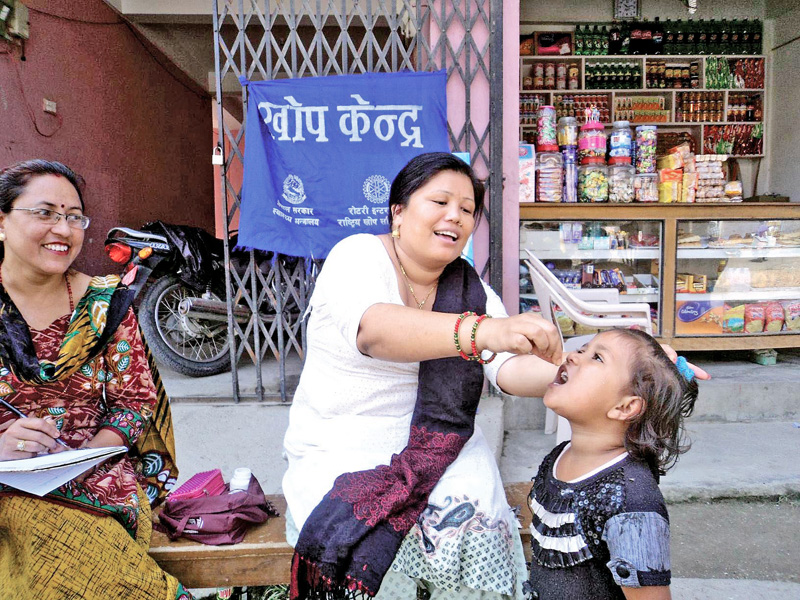WHO lauds South-East Asian countries’ efforts to protect children against polio
Nepal is mulling a shift to use of fractional IPV doses in immunisation schedule
Kathmandu, January 12
On the sixth anniversary of the last case of wild poliovirus in the South-East Asia region, World Health Organisation commended countries, including Nepal, for their continued efforts to protect children against the crippling virus and maintain the region’s polio-free status, despite challenging conditions.
“Amid a global shortage of injectable inactivated polio vaccine, countries in the WHO South-East Asia region are opting to use fractional doses of IPV, an evidence-based intervention that not only ensures continued protection of children against all types of polioviruses, but also helps save vaccine – a move bound to positively impact global vaccine supply in the coming years,” said a press release issued by Dr Poonam Khetrapal Singh, WHO regional director for South-East Asia in New Delhi today.
India became the first country globally to introduce fractional doses of IPV in childhood immunisation programme in eight of its 36 states in early 2016. Sri Lanka followed suit in July 2016. Bangladesh has decided to introduce fractional IPV doses this year.
Nepal and other countries in the region are also considering a shift to the use of fractional IPV doses in their immunisation schedule.
Studies have confirmed that two fractional doses of IPV, given twice to infants – first at the age of six weeks and then at 14 weeks – provide the same protection against all polioviruses as does one full dose of IPV.
By using fractional IPV, countries are saving vaccine and vaccine cost, without compromising on the protection that the vaccine provides to children against polio, said the WHO.
Since polio-free certification on 27 March 2014, all countries in WHO South-East Asia region have been working towards timely implementation of the global polio end game strategy to achieve a polio-free world.
It was the first WHO Region to complete the polio vaccine switch from the traditionally used trivalent oral polio vaccine to the bivalent vaccine (to prevent any paralysis caused by type 2 poliovirus strain in tOPV.
“The date – 13 January – the last time that wild poliovirus crippled a child in WHO South-East Asia Region in the year 2011, should be a reminder to all countries of the continued need to reach every child with polio vaccines and to strengthen disease surveillance so that poliovirus does not return to cripple children in our region,” said Dr Khetrapal Singh.






